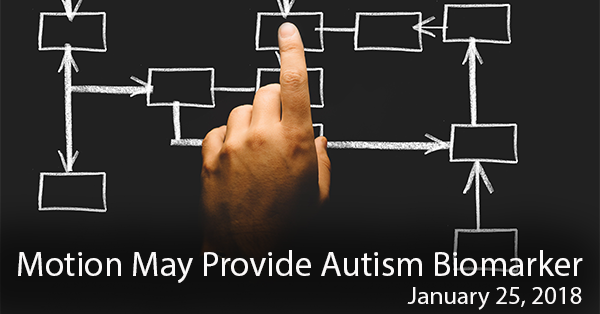Check out other stories from the Latest News
Body Movements Could Help Detect ASD
By Chelsea Toledo, M.A. on January 25, 2018

Background: Given the increasing prevalence of Autism Spectrum Disorder, or ASD, families seek early and reliable diagnosis to plan for appropriate interventions, leading to better outcomes. However, the established screening procedures are based on observation of children’s behavioral features by clinicians, so screening and diagnosis typically don’t take place until well after infancy.
What’s New: A recent study identified a biomarker that could potentially detect ASD based on movement. Wearing electromagnetic sensors on their hands, 71 individuals were instructed to point at a target on a screen repeatedly. The researchers recorded physiological information about the movements of the participants – whose ages ranged from 3 to 31, and 30 of whom had an ASD diagnosis – detecting differences that were imperceptible to the naked eye.
The researchers found:
• An algorithm was able to separate electromagnetic “noise” from the true neurological signals underlying the participants’ movements. Each individual’s movements corresponded a metric or “score.”
• The lower a participant’s score, the more likely he or she was to have an ASD diagnosis.
• Lower scores also corresponded to more severe cases of ASD.
• Moreover, 17 out of 20 parents of children with ASD undergoing the same test (who did not have ASD diagnoses themselves) showed movement patterns that differed from typical adults but were reminiscent of their children.
Why it’s important: This study suggests that extremely subtle differences in movement detected by quantitative measures can serve as potential evidence of ASD, and that there is a likely genetic component to the neurological features underlying these differences. Future research could shed light on the link between genes, neurons, and differences in movement – and could possibly point towards new avenues for early diagnosis.
Help me understand :
| Source(s) : |
| Tweet |

